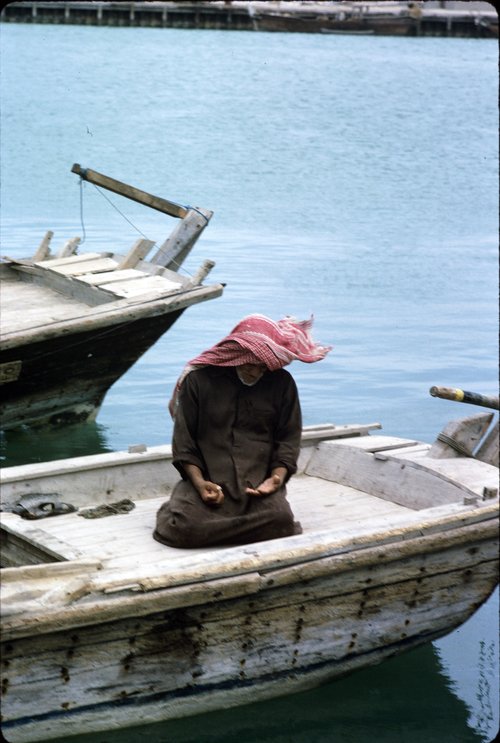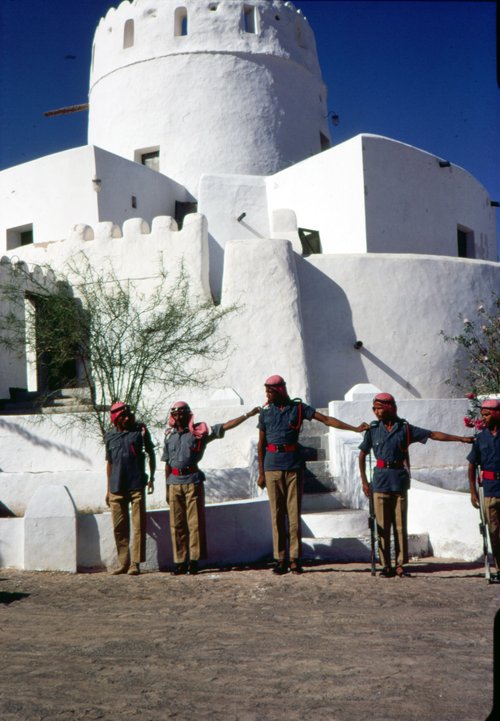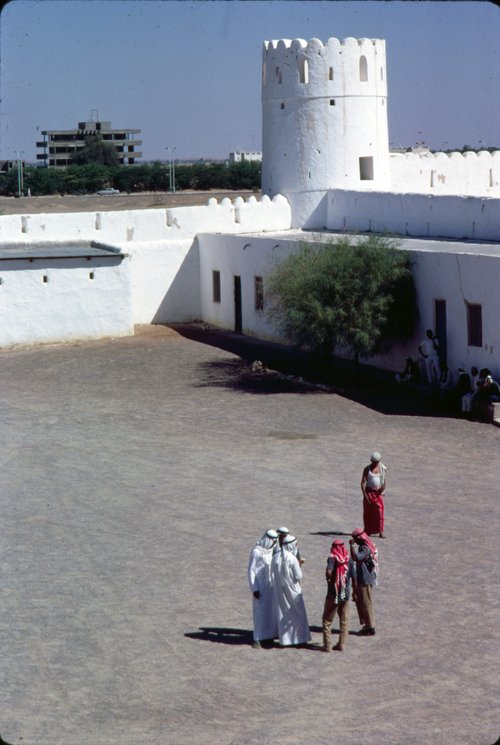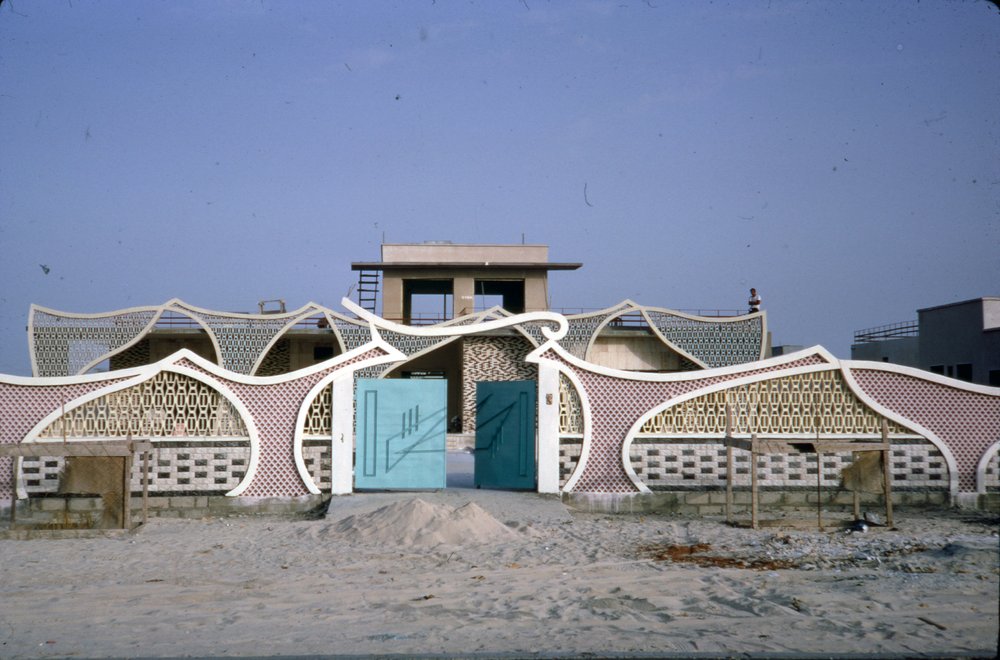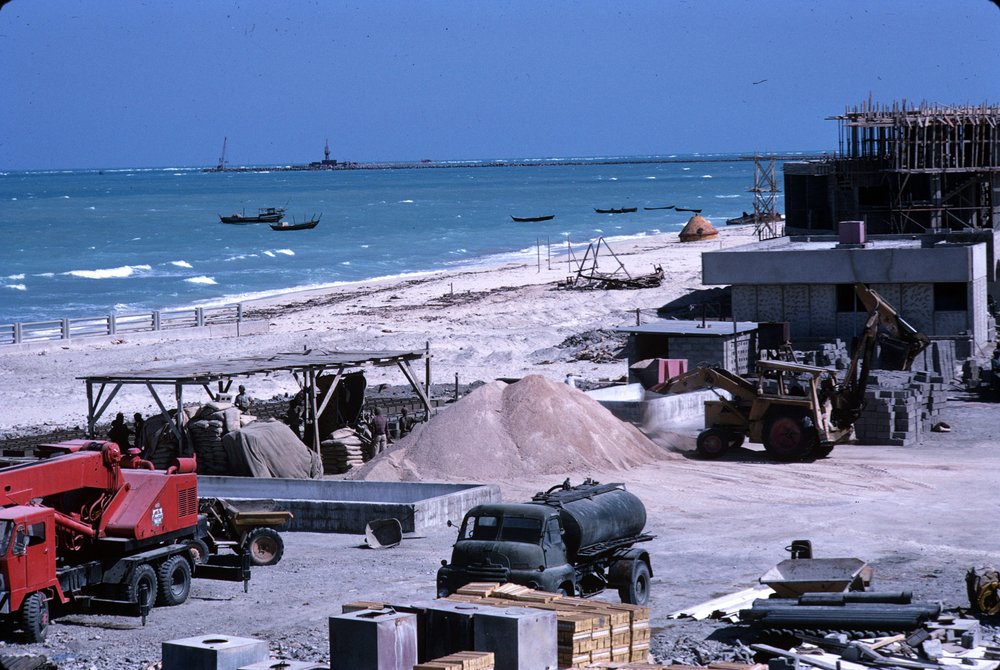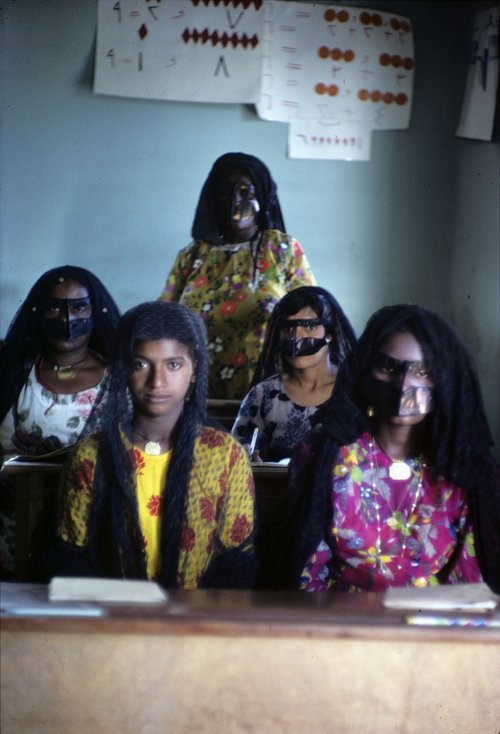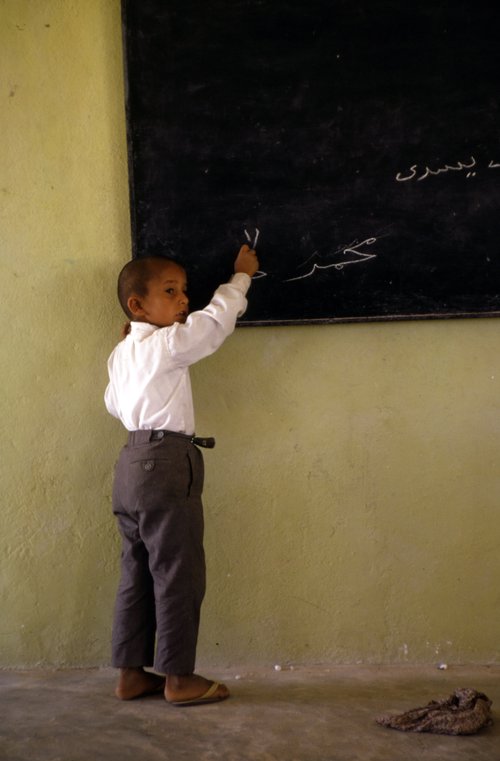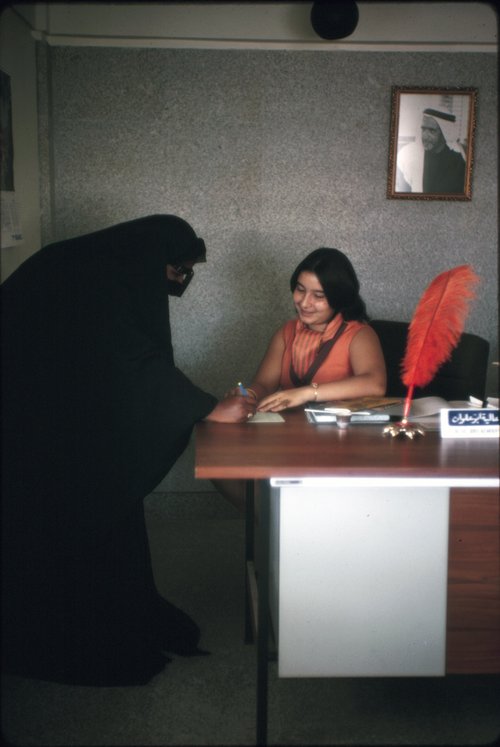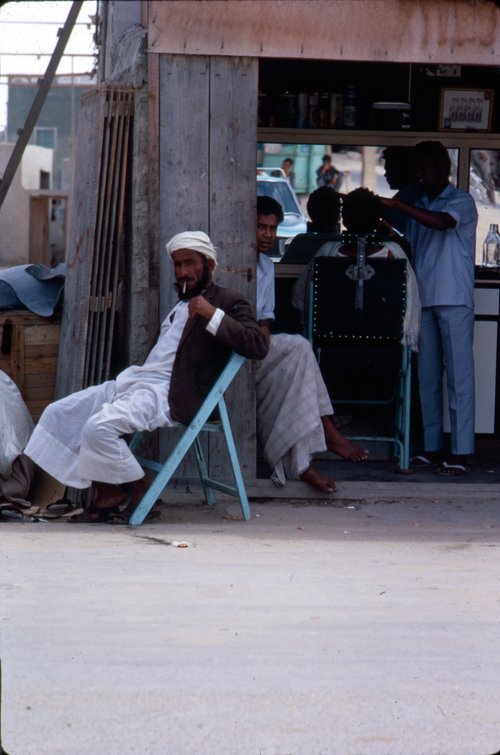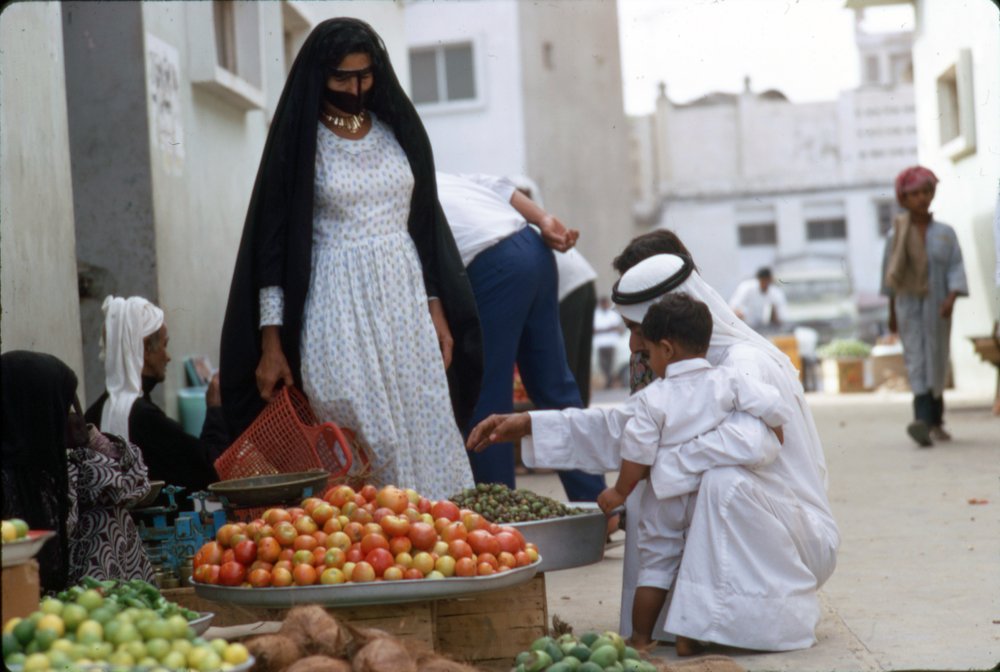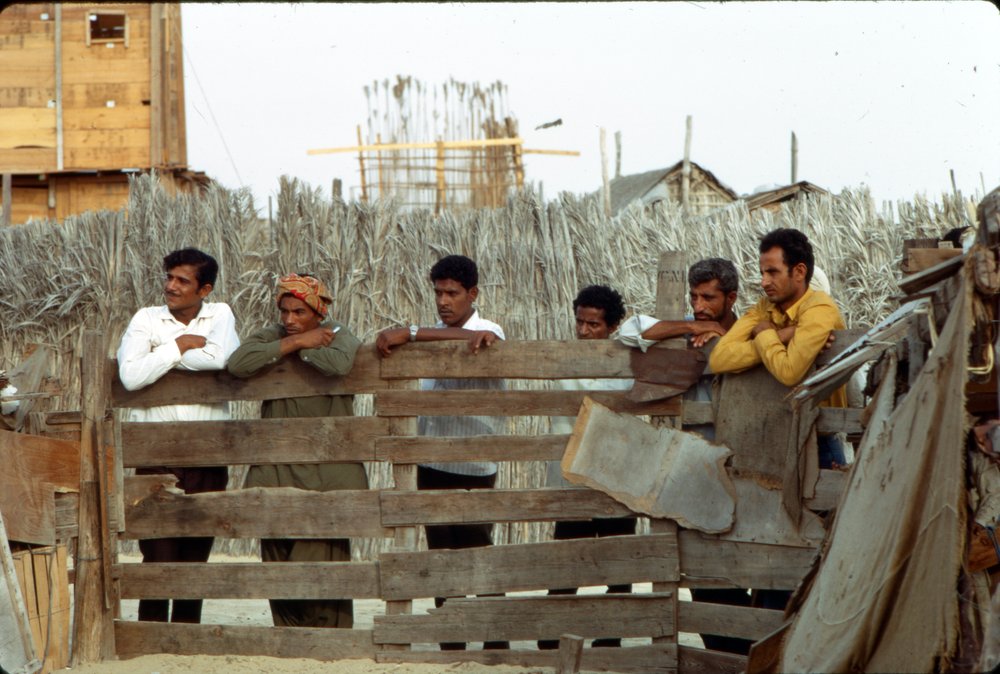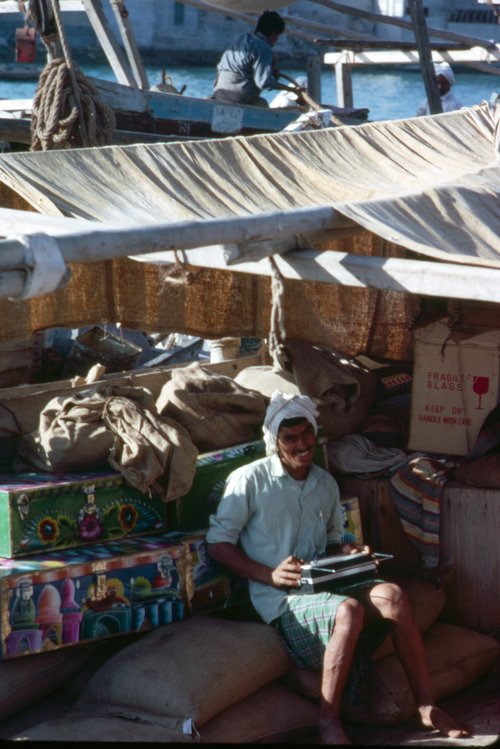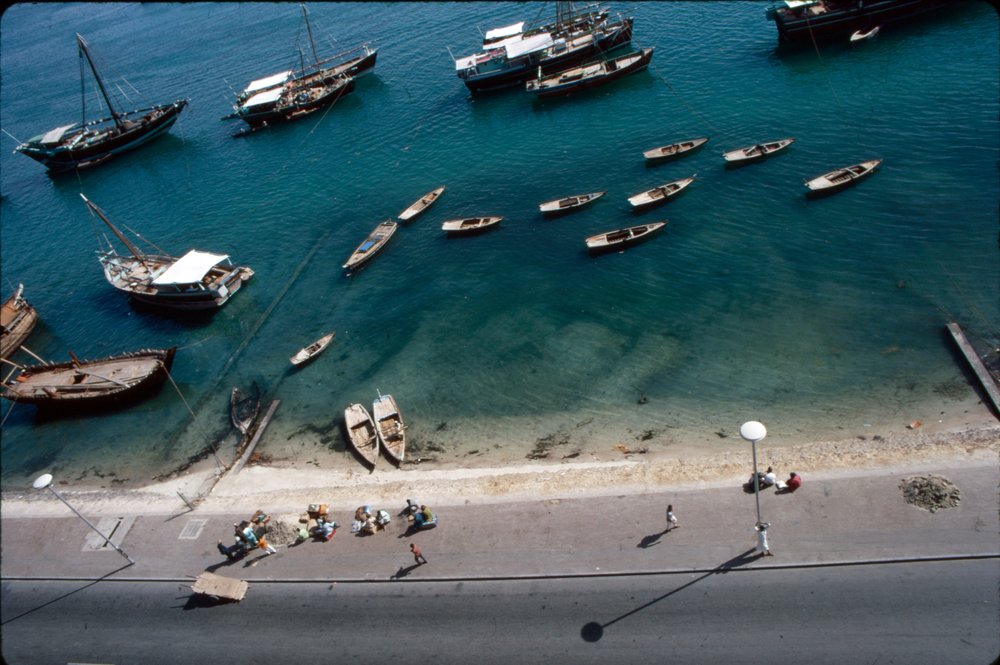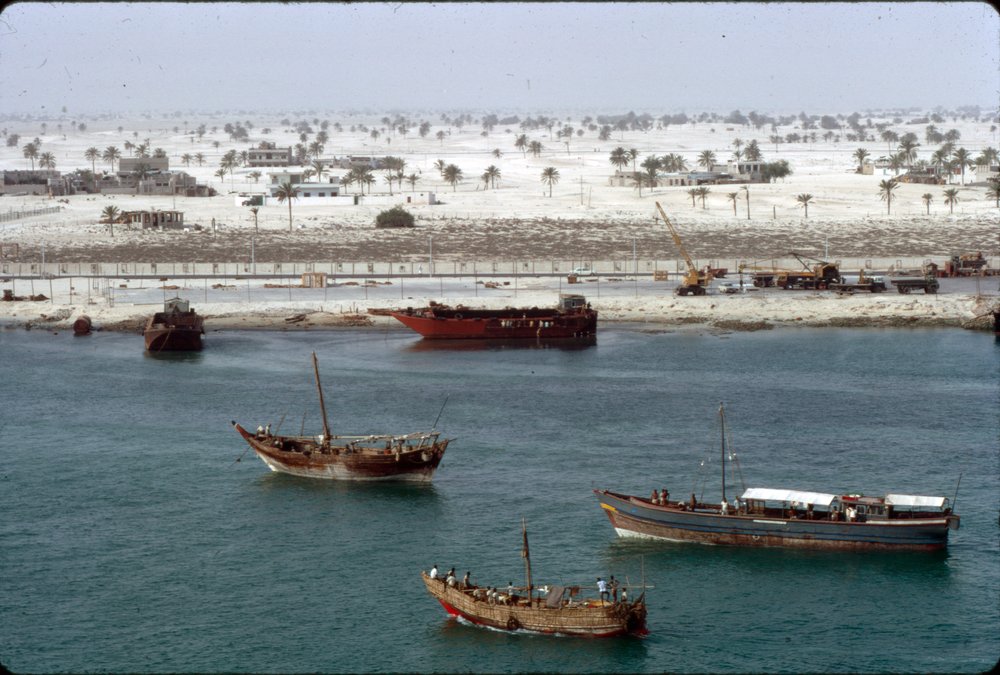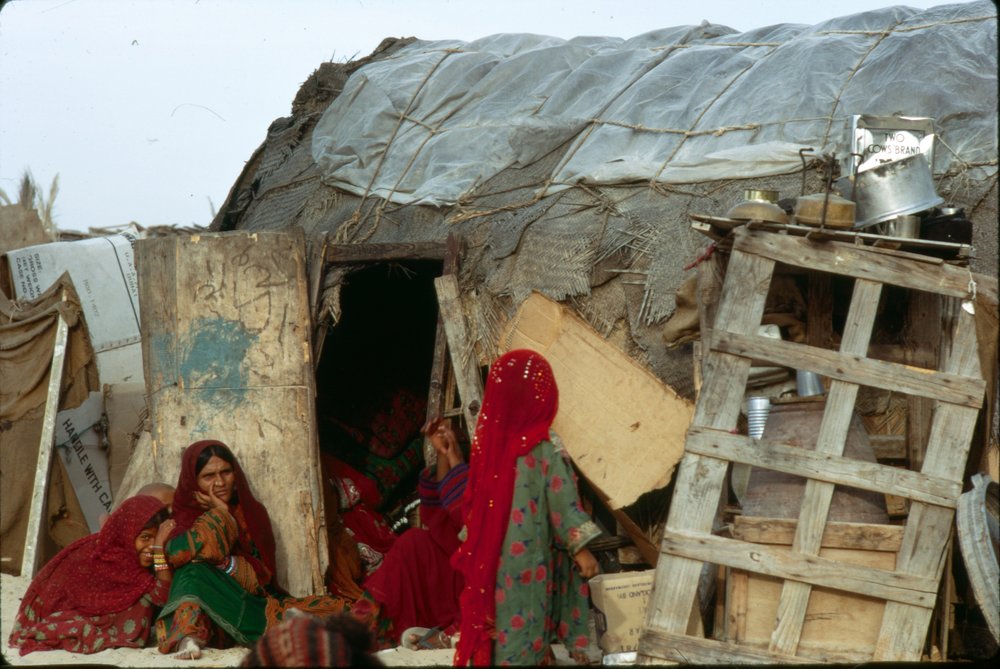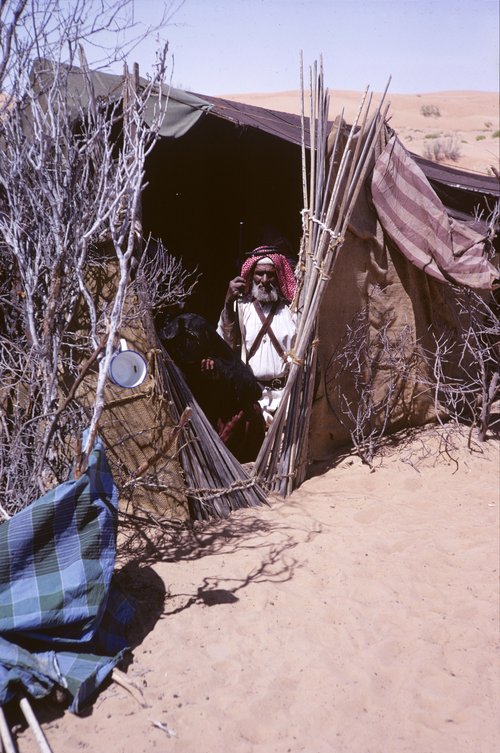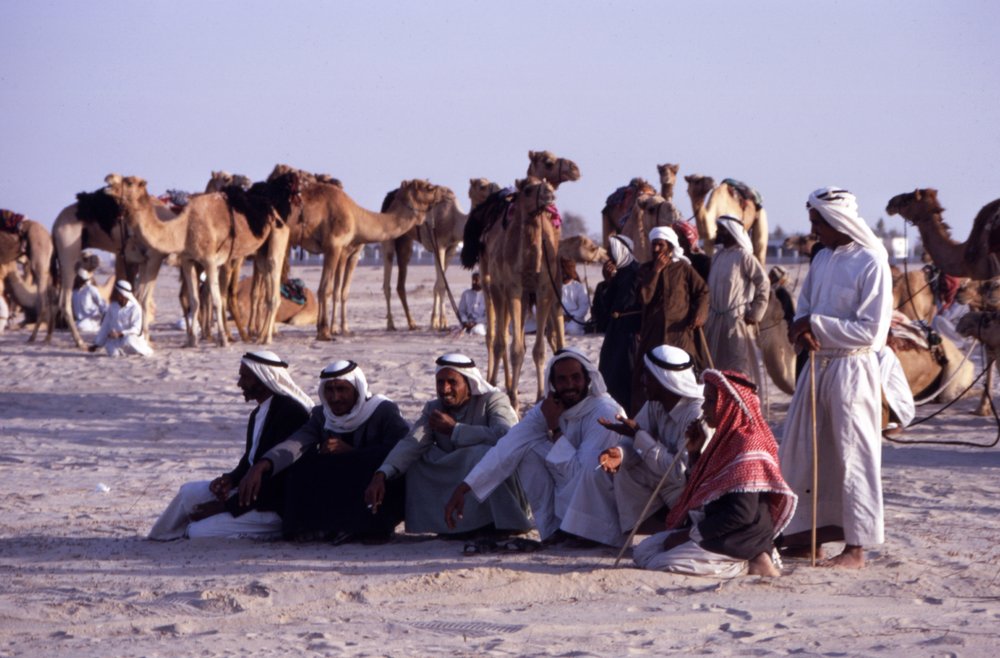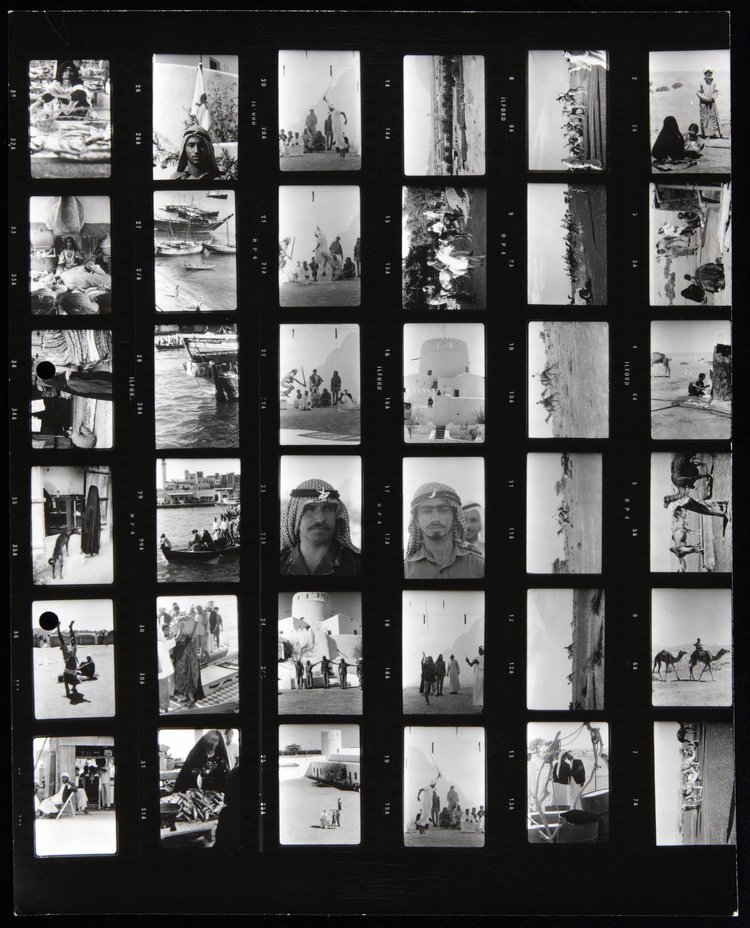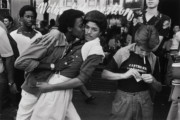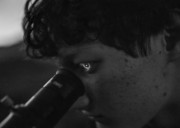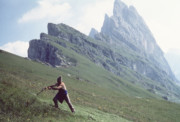Eve Arnold in the Trucial States: The United Arab Emirates before Federation
In 1970 Eve Arnold arrived in Dubai on assignment to document Muslim women as they negotiated traditional mores and modern development. Her photographs also captured the region on the cusp of developmental acceleration.
The United Arab Emirates turned fifty on December 2nd, 2021. Questions of history and memory-construction permeate every aspect of urban life in one of the newest nations in the world. They are incorporated into visionary declarations for a vibrant civic society based on economic prosperity and a complex state ideology that places Emirati identity at its center. This identity is itself an archipelago of tribal kinships intertwined with expatriate workers and foreign investors, all of whom have varied stakes and influence. In such a heterotopic environment, ethnicities have been intermingled and dialects have formed through a polyglossia of borrowed terms and appropriated languages. While nationality remains accessible to only a very few, changes in land ownership and residency in the last decade evince the need to acknowledge the realities of a diverse public.
Today, the country situates itself on the world stage as an economic powerhouse with immense oil wealth, as a geo-political arbiter, and a hub for cultural, educational, and medical tourism across Asia and Africa. Yet, in the middle of the twentieth century, cities such as Abu Dhabi and Dubai were small merchant towns, with an emerging urban infrastructure of roads and highways. What had once been trading and fishing villages along the Persian Gulf have scaled up in the past several decades into massive urban developments, becoming home to the world’s tallest building and the most recent world exposition.
For early-twentieth century European travelers, this part of the former Ottoman Empire was devoid of culture or history – a “desolate country” according to Wilfred Thesiger, a British military officer and author of Arabian Sands (1959), who wrote,
We reached the coast and followed it eastward through desolate country. There were limestone ridges, drifts of white sand, and stretches of gravel dotted with tussocks of woody grass and shriveled plants. Salt flats ran far out to sea, but yellow haze made it impossible to distinguish where the salt-flats ended and the sea began. The scene was colorless, without tones or contrast. We descended to the salt-flats and led our slithering camels across this greasy surface to the creek which separates Abu Dhabi from the mainland. We waded through the sea, rested for a while outside the stone fort which guards the ford, and then went on to the town, arriving there early in the afternoon. A large castle dominated the small, dilapidated town which stretched along the shore.[1]
Abu Dhabi sits on the north-eastern edge of the Empty Quarter, or Rab al khālī, the name of the vast desert that spreads across the Arabian Peninsula, between the Red Sea and the Persian Gulf (Fig. 2). It has historically been a space where trade caravans and religious missionaries crossed; pilgrims made their way from South and East Asia to the holy sites of Mecca and Madina; and where objects and ideas were exchanged across the maritime Silk Road, crossing Central and North Africa and making their way onward to West Asia and Europe.
"What had been trading and fishing villages along the Persian Gulf have scaled up in the past several decades into massive urban developments, home to the world’s tallest building and the most recent world exposition."
-
The discovery of oil in 1958 would be a turning point like no other, bringing with it rapid economic and social changes that would forever change the region. The traditional architecture of homes with wind-towers gave way to low-rise apartment buildings and private “villas” (Fig. 3). New institutions, such as airports, banks, and hospitals were established by professionals from neighboring countries, such as Egypt and Pakistan, as well from Britain and the United States. Before the federation that resulted in the United Arab Emirates, the Trucial States, as they were then called, were British Protectorates, which meant that Dubai, Abu Dhabi, Ajman, Sharjah, Ras al-Khaimah, Fujairah, and Umm Al Quwain were semi-independent entities under distinct tribal authority. The first three had been allied with Britain since at least the early decades of the 19th century, a relationship that would define movement across maritime and later – aerial – routes linking London to India.
The photographs gathered in this essay serve as both a complement and a corrective to Orientalist narratives such as Thesiger’s, that are both reductive and prejudiced. Eve Arnold arrived in Dubai in 1970 on assignment. The project, “Behind the Veil,” was to document Muslim women as they negotiated traditional mores and modern development. Arnold’s documentation began in 1969 in Afghanistan, and subsequently included Egypt, Jordan and the Trucial States. [2] The photographs ran as two cover stories for Britain’s Sunday Times Magazine, and led to an even more ambitious project, a film for the BBC, also titled Behind the Veil (1972). Arnold’s friendship with the niece of the ruler of Dubai, Sheikh Rashid bin Saeed Al Maktoum, provided unusual access during the filming in 1971 (Fig. 4).
As the title of these projects reveals, the fascination with the veiled Muslim woman, a hackneyed and problematic trope, was persistent in the 1960s and ‘70s, even as the women’s liberation movement was well underway in many parts of the world. However, while responding to the editorial mandate, Arnold presents women in the Trucial States as more nuanced subjects – sometimes veiled, sometimes not, attending school, working in banks, mobilized in the modernization projects underway in the nascent state. Their agency is perhaps in question, but not their visibility.
"From Bedouin encampments in Ras Al Khaimah to hotel construction along the Persian Gulf; from adult literacy classes to barber shops, Eve Arnold’s camera captured everyday life in a society undergoing rapid change."
-
Arnold’s photographs, now part of her papers at the Beinecke Rare Book and Manuscript Library at Yale University, are evidence of a moment that seems now distant, of regional connectivity and fluid mobility, and the coexistence – in relative equality – of multiethnic communities. Oil extraction and its resultant petrodollars were the main driving forces for urban planning, connecting the coastal towns to rigs and refineries further inland. New institutions for education and entertainment catered to the diverse labor force (Fig 5), just as residential and business enclaves formed through economic and racial stratification, concretizing divisions that continue to persist.
In the photographs, the thriving port along the Dubai Creek, with its Iranian and Indian businessmen, contrasts with the shanty villages of Baluch tribesmen. From Bedouin encampments in Ras Al Khaimah to hotel construction along the Persian Gulf; from adult literacy classes to barber shops, Eve Arnold’s camera captured everyday life in a society undergoing rapid change (Fig. 6). A crenelated circular fortification, soldiers drilling past in formation; children and camels, migrant-workers and rulers – all inhabit her closely cropped images. Flush with vibrant henna reds, sea blues, glittering greens and oranges, they invite a closer look that may unsettle what at first glance appear to be glossy promotional images. Indeed, Arnold’s photographs straddle both the commercial and documentary, and are geared primarily towards Euro-American viewership. Yet, they are also understudied historical objects that record the changing landscapes of cities such as Dubai and Abu Dhabi before anyone appreciated what was happening and what form change would take. Arnold’s photographs from fifty years ago evince the ambitions of the emerging nation, but also hint at the cost.
Notes
[1] Wilfred Thesiger, Arabian Sands, London: Penguin Classics, 1992); 296.
[2 ] Janine di Giovanni, Magnum Legacy: Eve Arnold, (Prestel, 2015); 101.
This article originally appeared on PLATFORM and is reproduced with kind permission.



